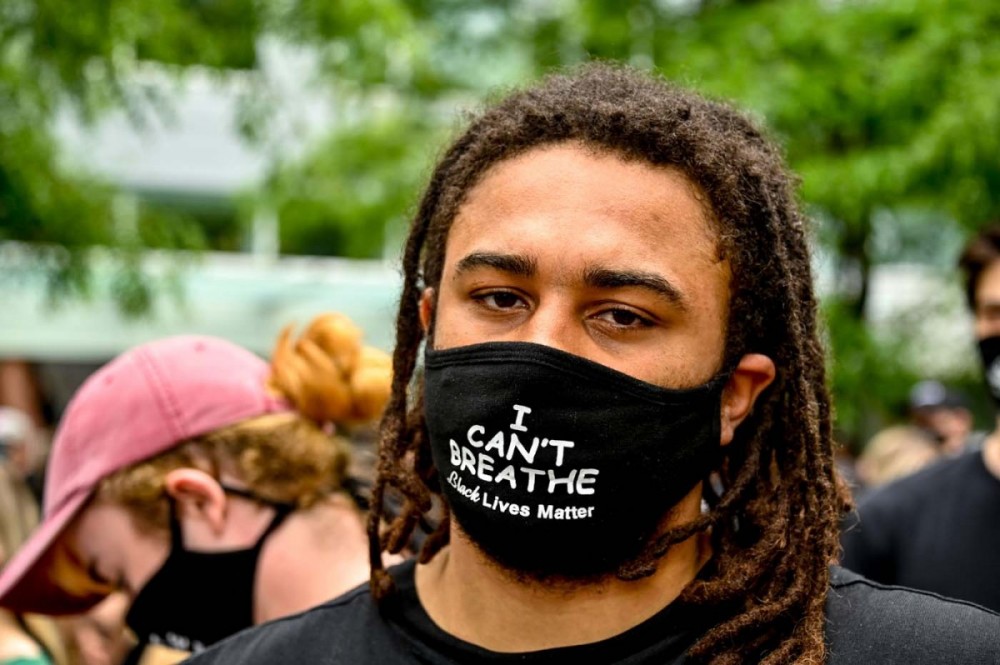I lived in Queens, New York until I was 14. Bobby Seale, Huey Newton, Eldridge Cleaver and Angela Davis were my heroes, for starters. Martin Luther King was assassinated in 1968, as was Bobby Kennedy. The American right-wing was on the rise, yet again, beating with batons Black folks and progressive white folks, yet again; yelling at them, at us, “America, Love it or Leave it .” Well, my parents did leave the Big Apple and its rat race. We moved to beautiful Blue Sea Lake, Quebec, population 550, in April 1971.
In Canada, we often like to look at the United States and shake our heads. But it’s time we look hard at our own country.
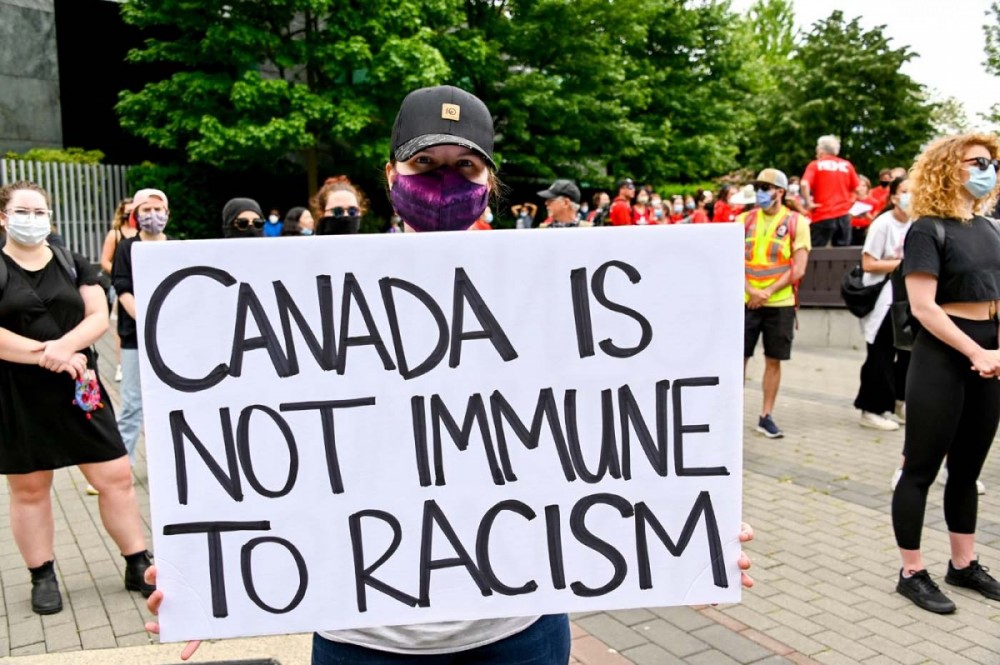
PHOTOGRAPH: JOSHUA BERSON
Two things have hit Canadian society with a vengeance, and both have laid bare the anti-Black racism that exists here. First, the pandemic. COVID-19 has shone a light on Canada’s greatest weaknesses, economic and social. Black workers in long-term care, in food services, in cleaning, and in so many other sectors find themselves having to decide whether to go to work, most often on public transit, or to stay home and stay safe. There is simply no choice. The bills have to be paid. Being on the front lines of COVID-19, Black workers, and Black migrant workers among them, as well as their families and their communities, are hit the hardest.
Second, police-instigated violence. In the midst of this pandemic, the Black community is being inundated with yet more news of it, not only in the U.S. but also here in Canada. While you experience the unbearable stresses of working conditions no one else wishes to endure, you must worry each day if your own child will be coming home safe, or not at all.
My Story
The labour movement can be a vocation, or calling. I remember at the age of 18 when I was hired as a filing and stockroom clerk at the Canadian Labour Congress. It was fascinating, never boring. Even the filing of the labour council minutes was interesting. Those were the days of strikes and stoppages, wildcats and disputes among affiliates, raiding and everything else under the sun. All the OPEIU Local 225 employees at the Congress were Sisters — except me, the young lad with a strong back who could lift boxes, many, many boxes They took me under their wing and taught me everything I needed to know about working there. Best of all, they made me a shop steward. Those experiences helped prepare me for later when, first as vice-president of a local, then a regional vice-president, and finally an executive vice-president of the Public Service Alliance of Canada (PSAC), I simply had too many experiences defending, in various federal government departments, Black members as well as members from other equity-seeking groups.
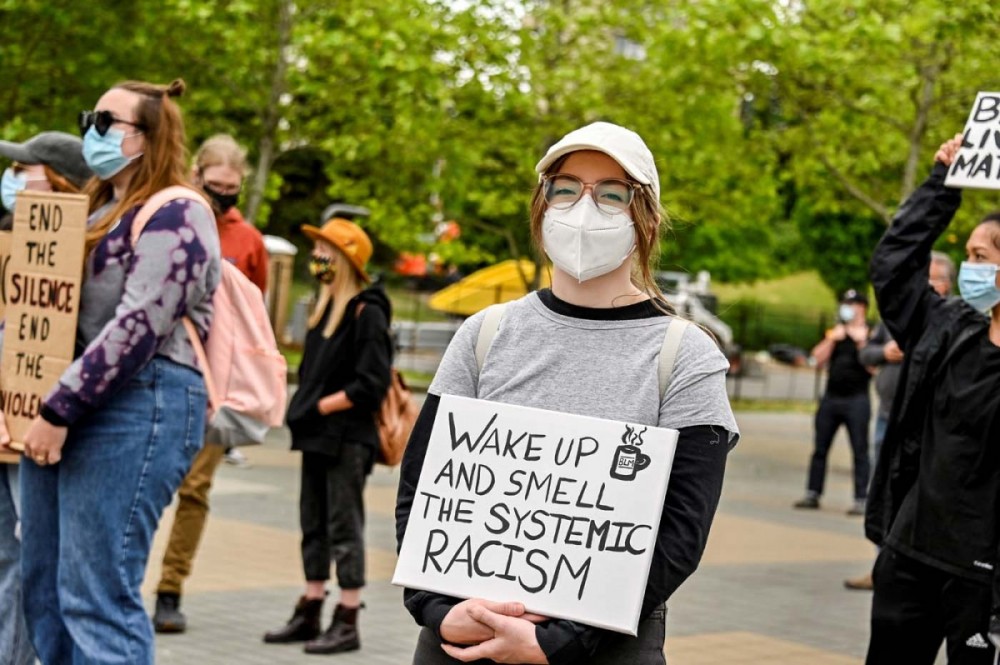
PHOTOGRAPH: JOSHUA BERSON
The complexities of intersectionality, especially the intersectionalities experienced as a Black person, are very difficult to deal with, both personally and in the workplace. The systemic and institutionalized racism that Black workers and Indigenous workers have faced since the beginning of colonization is so entrenched that members of white mainstream society often find it difficult to recognize and acknowledge, or even to admit that it exists.
And Black workers do stand out in workplaces. They are often the direct targets of attacks by intolerant members of the Canadian white mainstream. I don’t wish for one instant to deny or gloss over the fact that within communities of colour we deal with our own realities of intolerance. (As a gay Black man, I can wax eloquently on the homophobia I have experienced within my own community both before and after coming out in 1999, but I don’t have the space to do that here.)
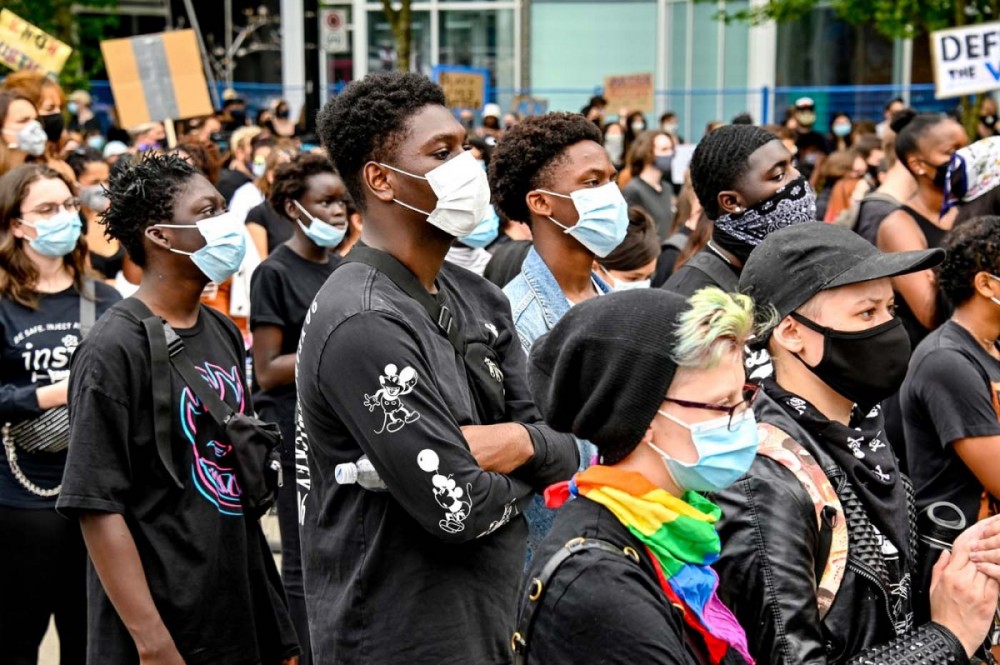
PHOTOGRAPH: JOSHUA BERSON
Historically, unions have often been in the vanguard of defending workers’ rights, which, in reality, are human rights. For years, the Canadian Labour Congress has lobbied the federal government on anti-Black racism. Notably, it has lobbied the government to:
* create an intersectional national anti-Black racism strategy. We are not there yet, but at least the federal government has set up an Anti-Racism Secretariat. We now need the strategy and the action plan;
* institute criminal justice reform to address anti-Black racism in the judicial and prison system. When we do that we cannot but speak about the societal crime of Indigenous incarceration; and;
* call for an inquiry on the overrepresentation of Black children and youth in the care of child protective services. Again, this must be linked to how Indigenous children are being treated.
These are some key policy asks that many of our affiliates are making on their own, as well. But we ask all unions to put the demands of these campaigns at the forefront of their own lobbying efforts. We must do more.
With the events touched off by the murder of George Floyd, and the wide acceptance of Black Lives Matter over the past weeks, perhaps the keepers of the status quo have become a bit more reflexive and pensive before speaking on racism in Canada. Perhaps. They may think it’s only about a few bad apples. But the videos keep coming, of police brutality against Black people and Indigenous people, notably, and people are understanding better how policing leads to the ensured incarceration of Black men — probably the most blatant example of the systemic oppression of Black communities. Keep them in fear of authority, turn a blind or nearly blind eye to the abuses committed within the system, ergo systemic oppression. Keep things in order.
The Same Historic Racism
These approaches are the same as those used 50, 100, 200 years ago and longer. This is the same systemic oppression exercised against workers to keep them in their place, to ensure that Capital maintains and indeed expands its power, economically, socially and politically — most of all, its privilege. The Canadian Establishment, though less Anglo-Saxon now, is still overwhelmingly white, and still completely male-dominated. But this is where the progressive forces of unionization and assembly hit the road, within the constant struggle to ensure fairness by redistributing economic, political and social power throughout established Canadian structures. When we do the work of redistributing power, we cannot forget to look within our unions.
One domain that has come to the forefront in the fight against anti-Black racism is environmental racism. The privileged colonialist stole Indigenous lands and used the labour of African slaves to work that land. That happened in the USA. But it also happened here in Canada. Still today, the profits of industry go to Bay Street and Wall Street, and the tailings ponds and toxic waste get fed to Indigenous and Black communities, as writer Ingrid Waldron and many others continue to expose.
Defunding the Police
A word on defunding police, or police reform, or whatever it takes to rein in police budgets that exploded following 9/11, when the rapid militarizing of police forces was justified as necessary to fight terrorism. Instead of fighting terrorism, though, it seems police have only intensified their terrorizing of marginalized communities living in poverty, mainly Black and racialized communities, not to mention Indigenous communities. What we need is objective analyses of each municipality’s policing budgets. Will tank-like vehicles really keep communities safe, or are they actually intended to keep expressions of frustration, anger and discontent by marginalized communities in check?
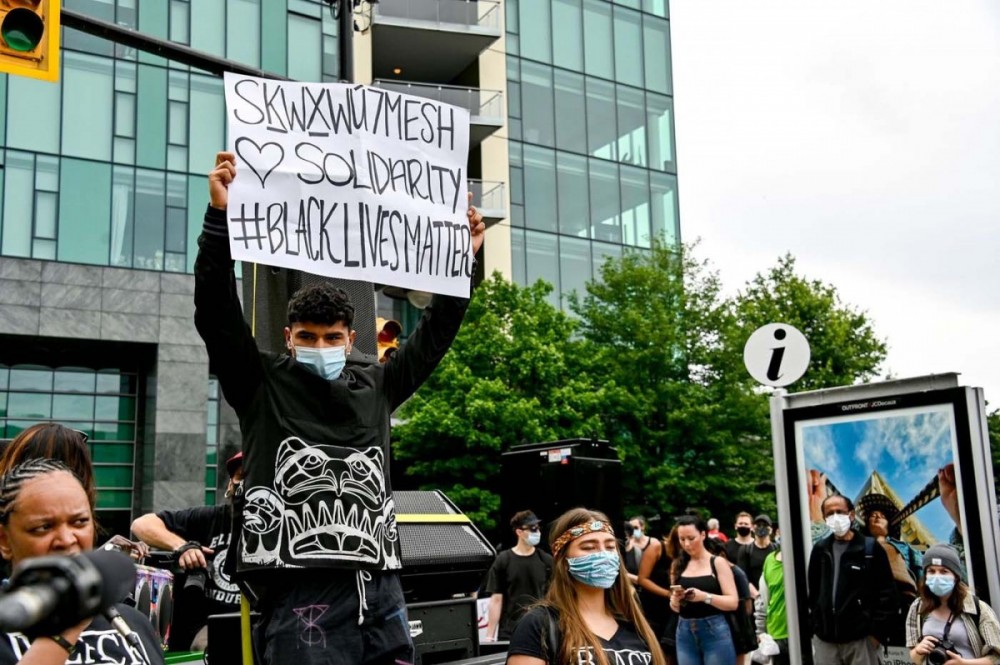
PHOTOGRAPH: JOSHUA BERSON
Policing budgets are one aspect of the Establishment’s control over citizens who in its opinion need to be kept down and under control. And today, in Canada, that applies mostly to Indigenous, Black and racialized folks. Indigenous people need to be kept away from their ancestral lands and on reserves, or in urban centres, where many of them are struggling. Black and racialized folks don’t have the ancestral lands issues to deal with, but they do represent an inestimable source of cheap labour, as long as they can be kept in the chains of systemic poverty and systemic oppression, all made possible through the myriad and labyrinthine processes of systemic racism.
The Coalition of Black Trade Unionists
The union movement has been better than most major economic sectors in calling out and demanding reforms to combat systemic racism, but we have much work to do. For inspiration, we can look to the very important work of trade union associations and groupings of Black labour activists, such as the Canadian Chapter of the Coalition of Black Trade Unionists — a crucial space for organizing, and for providing collective healing for Black people in the labour movement.
This is in addition to the good work of the very many Black union activists, too many to mention here, who over many years have been in the struggle, and who have accomplished and continue to accomplish so much for our communities We do not celebrate enough the election of the first Black woman in Canadian history, Jan Simpson, as president of the Canadian Union of Postal Workers, a critically important, major national union.
The time has come to overthrow these social, economic and political injustices, and for the first time, it seems, a majority of the white mainstream population agrees. The time has also come for a majority of them to take up the struggle. Education is important, and it is said that education starts in the home. Much of my education came from my parents, who instilled in all their children a strong sense of fairness, social justice and activism. And it is only fair that all people be treated fairly. Is it not?
Larry Rousseau is executive vice-president of the Canadian Labour Congress.


